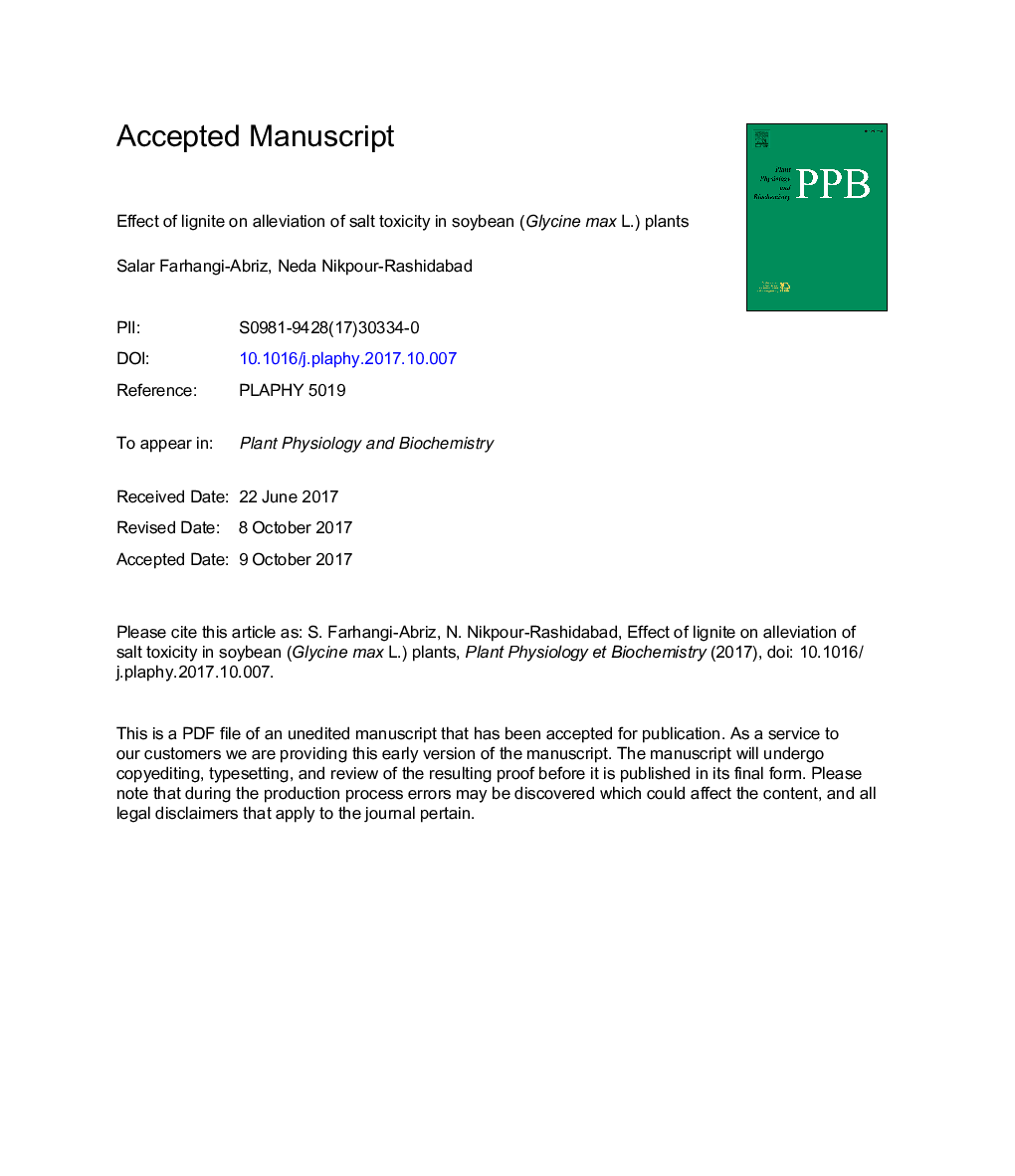| Article ID | Journal | Published Year | Pages | File Type |
|---|---|---|---|---|
| 5515279 | Plant Physiology and Biochemistry | 2017 | 32 Pages |
Abstract
Salt toxicity of agricultural land is a natural phenomenon which is due to agricultural irrigation. This toxicity is harmful to crop productivity via increasing oxidative stress products. In a factorial controlled trial, four levels of lignite-enriched soil (soil lignite content: none, 50, 75 and 100 g kgâ1) were exposed to three levels of soil salinity (0, 5 and 10 dS mâ1 NaCl). Then reactive oxygen species (ROS) generation (hydrogen peroxide and superoxide radical), lipid peroxidation, antioxidant enzymes activities (peroxidase, catalase and super oxide dismutase), proline, glycine betaine, soluble sugars and soluble protein contents of soybean plants were compared across different lignite concentration and saline toxicity. Under the 5 and 10 dS mâ1 NaCl, sodium entry to the leaf and root cells, hydrogen peroxide concentration, superoxide radical generation, lipid peroxidation and osmoprotectants creation increased and consequently plant growth reduced (12-49%). Lignite applications by improving the cation exchange capacity of soil (8-16%), enriched the leaf and root cells with potassium (5-26%), calcium (40-56%), magnesium (30-42%) and inhibited the sodium entry to the cells, and consequently increased potassium/sodium ratio and reduced oxidative stress, antioxidant activities and synthesis of osmoprotectants in soybean leading to increased plant biomass (18-37%). Lignite usage in 75 and 100 g kgâ1 soil showed a better effect than 50 g kgâ1 soil on reducing harmful effects of salt toxicity. Soil enrichment with lignite improves plant tolerance to salt toxicity via decreased oxidative stress.
Related Topics
Life Sciences
Agricultural and Biological Sciences
Plant Science
Authors
Salar Farhangi-Abriz, Neda Nikpour-Rashidabad,
